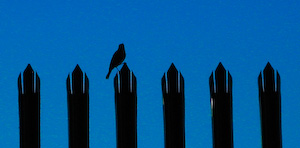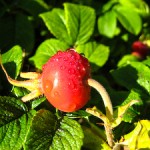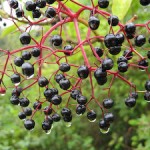I thought that Spring had sprung a few weeks ago when the sun seemed to be warmer and there seemed to be some flowers, such as the Winter Aconites appearing. I guess I should have taken a hint from their name, and realised that it was, in fact, still Winter. The weather this week has been pretty wet and pretty changeable, and I think that some of the signs of Spring are perhaps a little later this year – or maybe it just feels that way.
My first definite sound of Spring is usually the sound of the chiffchaff. I went to the Country Park last Sunday and heard two of them calling away, and left with a big grin on my face. I had been expecting to hear them on the old railway track on my way to work this week, but it has been strangely silent (in terms of chiffchaffs). However, I did hear one on the way back from town yesterday so, all is right with the world. Looking back 12 months, it wasn’t until the end of March last year that I first heard them, so maybe things are not out of sync after all. Other birds are also singing away, most noticeably the wrens. These tiny birds manage to make quite a lot of noise, and, at this time of year are sitting more conspicuously on bare tree branches, advertising their presence. There were concerns that the cold winter may have dramatically reduced their numbers, but there seemed to be quite a number singing yesterday.
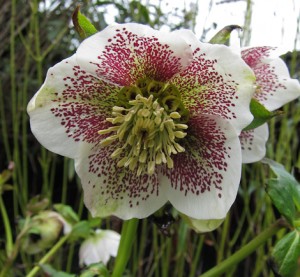 Although I saw my first butterfly over a week ago, I haven’t seen any since. However, there are quite a number of bumblebees out foraging and the occasional honey bee (quite a few were frequenting the anenome blanda at Ryton last week). At first glance it would appear that there is not much about for them at the moment, so it is probably just as well the numbers are small. I haven’t seen any celandines in flower as yet (although I spotted a few on a sunny bank that looked as though they were tempted) and the blackthorn seems late – the first flowers are out in the hedgerows on the sunny sides of the street, but the old railway track is a bit bereft. However, there are quite a few flowers in the gardens for them – my hellebores are now flowering well, there are lots of daffodils about as well as the aforementioned anenomes, and there are still some flowering heather in a few places.
Although I saw my first butterfly over a week ago, I haven’t seen any since. However, there are quite a number of bumblebees out foraging and the occasional honey bee (quite a few were frequenting the anenome blanda at Ryton last week). At first glance it would appear that there is not much about for them at the moment, so it is probably just as well the numbers are small. I haven’t seen any celandines in flower as yet (although I spotted a few on a sunny bank that looked as though they were tempted) and the blackthorn seems late – the first flowers are out in the hedgerows on the sunny sides of the street, but the old railway track is a bit bereft. However, there are quite a few flowers in the gardens for them – my hellebores are now flowering well, there are lots of daffodils about as well as the aforementioned anenomes, and there are still some flowering heather in a few places.
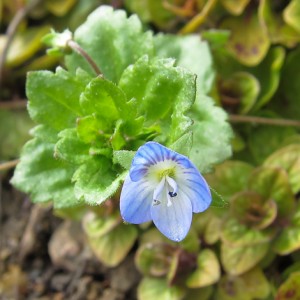 I also noticed that the germander speedwell (treated as a weed by many gardeners) is now starting to flower. I quite like the pretty blue flowers which remind me of the Summer sky, which is a blessing when it is actually covered in black cloud! This is quite a common plant in the wild and in gardens, and provides an early source of nectar for some solitary bees. It was also apparently used in herbal medicines at one time to treat coughs and catarrh.
I also noticed that the germander speedwell (treated as a weed by many gardeners) is now starting to flower. I quite like the pretty blue flowers which remind me of the Summer sky, which is a blessing when it is actually covered in black cloud! This is quite a common plant in the wild and in gardens, and provides an early source of nectar for some solitary bees. It was also apparently used in herbal medicines at one time to treat coughs and catarrh.
Has Spring started to make an appearance where you are?
